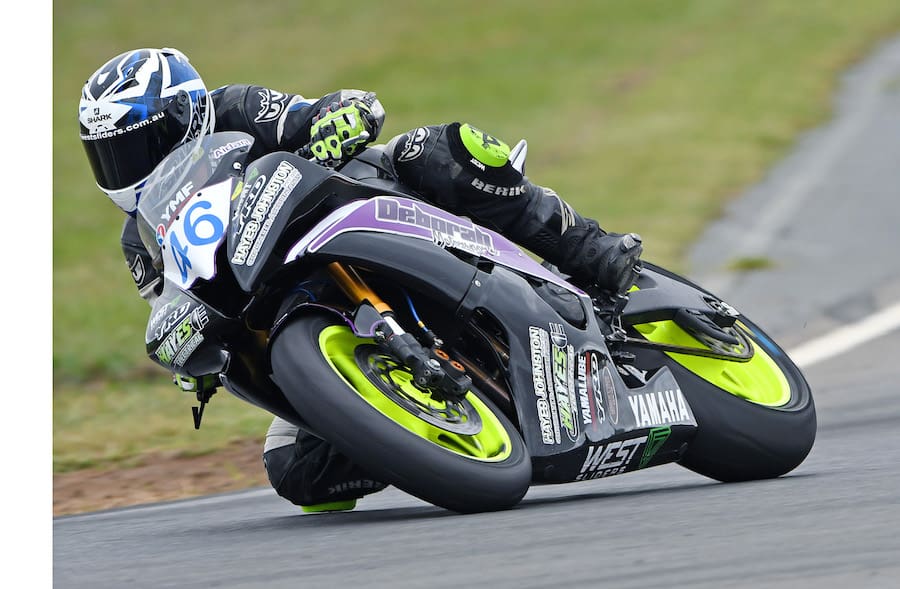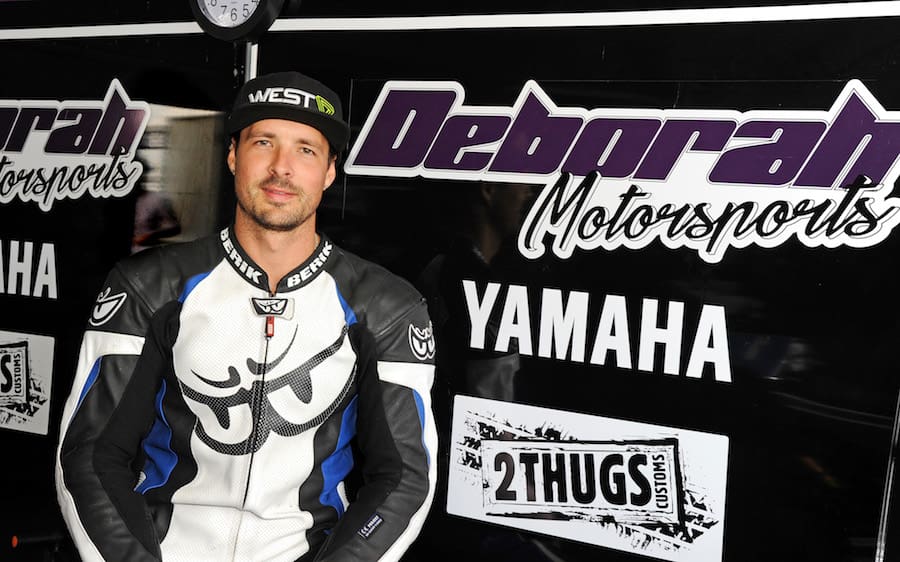Higher speeds plus heavier bikes means more damage when you crash
I started racing BMX at the age of four, then motorbikes at seven. I competed in mini-khana, motocross and supercross. I started enduro at 16 and raced in the Australian Off-Road Championship, the Australian Four-Day Enduro six times and the 2006 International Six-Day Enduro before stopping in 2009. In 2010 I started moto trials and in 2011 my daughter Zali was born. I found it hard to fit in family time, work and practice, so I gave up motorbikes and stuck to trials pushbikes, which I still ride.
But then in 2014/15 I did a few trackdays on an Aprilia RS125 and RS250, and in February 2016 Dad showed me an article in AMCN about a new class in the ASBK called the Yamaha R3 Cup. He said, ‘Why don’t you enter?’ Two days later we got the email that I was accepted, and with my wife’s full support I was about to start road racing! I was ecstatic; the thrill of the start, with the butterflies before the gate drops, was about to begin on the tar.
Time restrictions meant some very late nights, but with help from friends the bike was ready to race. We arrived at Wakefield and it was raining. I had never ridden a roadbike in the rain and now I was about to attempt it at race pace! The R3 Cup bikes could enter the Production 300 and Over category too, so I entered both classes for extra track time. I finished the season third in Production 300 and Over and fourth in R3 Cup.

The R3 was a great way to get into road racing. The bike couldn’t be modified much at all – fairings, rearsets, full system race exhaust, air filter and suspension were the only things we could change (plus a power commander in Production). The R3 got me hooked, but I was big on the R3. Even after losing 8kg to help with the smaller motor size, I was still about 15kg heavier than the two top riders, which was a big disadvantage. I thought about moving up a class for 2017. I had owned a GSX-R600 before and I fitted into the cockpit better, and I was keen to see what racing a 600 would be like.
But the Supersport class needs a lot more set-up – the bike is allowed more modifications than the Production class, and I wasn’t sure what to do in those areas. I spoke to some of the Supersport riders and people who helped me through my first season, as I needed to set the bike up properly to be competitive in the class.
The 600s have better brakes, better suspension and are allowed quickshifters, power commanders, auto-tune, modifications to the ECU, slipper clutch and more! Still new to the sport, I had no idea about these things or the things that can be modified in the engine, so I needed mechanical help. Tyre and fuel usage is more than double, so a bigger budget is needed as well. Another element to consider is that there are two choices of front tyre compound and three rear.
So when Brando Racing asked me join them in 2017, I knew their expertise and knowledge would help me be competitive in the Supersport class. The decision to change to Supersport for the 2017 ASBK season was made.
We bought two Yamaha R6 bikes already set up for the track and I went to SMSP to start learning the bike. I had to remind myself of the change of power – be smooth or get bitten with a rear step-out, and with the higher speeds plus heavier bikes means more damage when you crash.
I can really feel the weight when braking and the rear sliding under acceleration, something I had never felt on a roadbike before, but I needed to get used to it and learn to spin the rear wheel comfortably if I was to be fast. Initially I was trying to ride the R6 like the R3 so my lines were wrong – I was trying to carry too much corner speed, my braking was not hard enough, I wasn’t holding the bike in each gear long enough and I was a long way off the pace. More power with better suspension and brakes means changes are much more noticeable and affect the ride more than I ever felt on the R3.
On top of that I’m learning to use the race-pattern gear shift, selecting what tyre compounds to use and taking into consideration tyre degradation. The races are longer and the bikes are heavier, which means more energy is required for longer to stay consistently fast.

It’s a lot to get my head around, but I’m enjoying the change and learning to ride faster, and I will be pushing to improve.
By Aidan Hayes